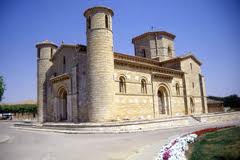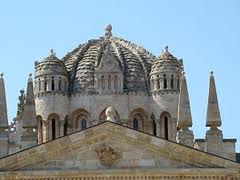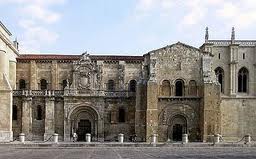Romanesque Architecture
Europe witnessed a period of cultural and economic prosperity during the X century that gave rise to one of the most active artistic moments in the history of the West. Largely boosted by the rising power of the Order of Cluny, which had emerged in 910 and which went through a period of dramatic expansion roughly fifty years after its creation, a common aesthetic, design and goal spread through most of western Europe in remarkably little time.

The Cluniac reform sought a return of the clerical life to the precepts set out by St. Benedict, essentially reduced to labour and prayer. The practical consequences of this move were unpredictably beneficent for the Church, as ultimately it meant that the Order was directly regulated by the Pope in Rome, thus absolving the monasteries from any responsibility towards the local, regional or even national Lord.
Initially intended as a move to restrain the political involvement of the clergy in matters that pertained altogether to a realm outside the religious, this condition eventually produced enormous monetary dividends to the Order of Cluny, which was now exempted from paying a great deal of tax, with the backing and the sanctioning of the Vatican. Effectively, the Order of Cluny thus sidestepped the structure of the feudal system and jumped straight to the top of the ladder, only beneath the Pope.
Consequently, round about the turn of the millennium and for the ensuing hundred years Cluny expanded its circle of influence, founding and taking over priories all over the West, until it established a web of more than 2000 churches. At a supranational level, the Order of Cluny came to be the most powerful institution in Europe outside the Vatican, for whom it worked.
Pilgrimage to Santiago de Compostela
In Spain, the pilgrimage to Santiago de Compostela soon became a ritual of unity between the Christian kingdoms in their Holy War against the Muslim enemy in the southern end of the peninsula, long before the Reconquista turned into a commercial affair. Towards the end of the X century, however, this symbol of Christian union had transcended the Iberian kingdoms, reaching beyond the Pyrenees.
The pilgrimage, among the most important ones in Christianity, after Rome and Jerusalem, soon opened a route that, far from merely pious, turned into the economic artery of Spain, giving rise to a huge increase in trade, economic, social and, perhaps most importantly, cultural.

Needless to say, the Order of Cluny was not about to miss out on such precious opportunity. One by one, more monasteries, priories and the likes fell under the hands of Cluny, who then developed these centres to make them their administrative hubs. There are numerous examples on Cluniac priories along the pilgrimage, from the French side of the Pyrenees in Moissac and Le Puy, to the priori in San Juan de la Peña, near Jaca, Nájera, Carrión de los Condes in Castile and Sahagún in León.
All these centres were built in a relatively similar style at roughly the same time, near the end of the XI century. They were solid constructions made in stone, defined by the use of semicircular arches and high vaults in the inside. There were small windows and majestic archivolted portals and long arcades held by columns or piers. The construction was meant to be sobre from the outside, contained and at the same time imposing for their size.
The Cathedral of Jaca is considered to be the first example of Romanesque architecture in France, imported from France through the pilgrimage to Santiago. Today, only one of the three original apses remains from the Romanesque original. Despite the many changes undergone by the building, the apse still evidences the sobriety of its shape, the combination of curved and square lines, the use of small semicircular arches and the simple decoration using a form of checkered relief known as 'taqueado jaqués'.

Dated roughly at the same time and featuring similar characteristics is the Basilica of St. Isidoro of Leon. Already in place as a modest temple, the Basilica was expanded under the rule of Sancha of Leon to act as a Pantheon for the monarchs of Castile and Leon. Of this restructuring date the two portals, and the Pantheon itself, or funeral chapel, with its gate. The murals on the walls and ceilings of the funeral chapel, together with the capitals of the columns are a unique example of Romanesque art in Spain.
But if you want to see an unaltered sample of Romanesque architecture in Spain, then your best option is to travel to Frómista in Palencia, where the Church of St. Martin of Tours offers a remarkable opportunity to grasp the aesthetic ideals proposed by the architecture of the XI century.
In staggeringly good shape, gives evidence at first sight of the perfect balance between round apses and a polygonal dome, held by small, narrow buttresses attached to the massive walls that rise up to the sky from side to side of the crossing of the church. Small semicircular windows with few archivolts provide specific points of light on the inside, which, in turn, is richly decorated by colourful capitals both with narrative motifs, nature-inspired sculptures and imaginative hybrids.
